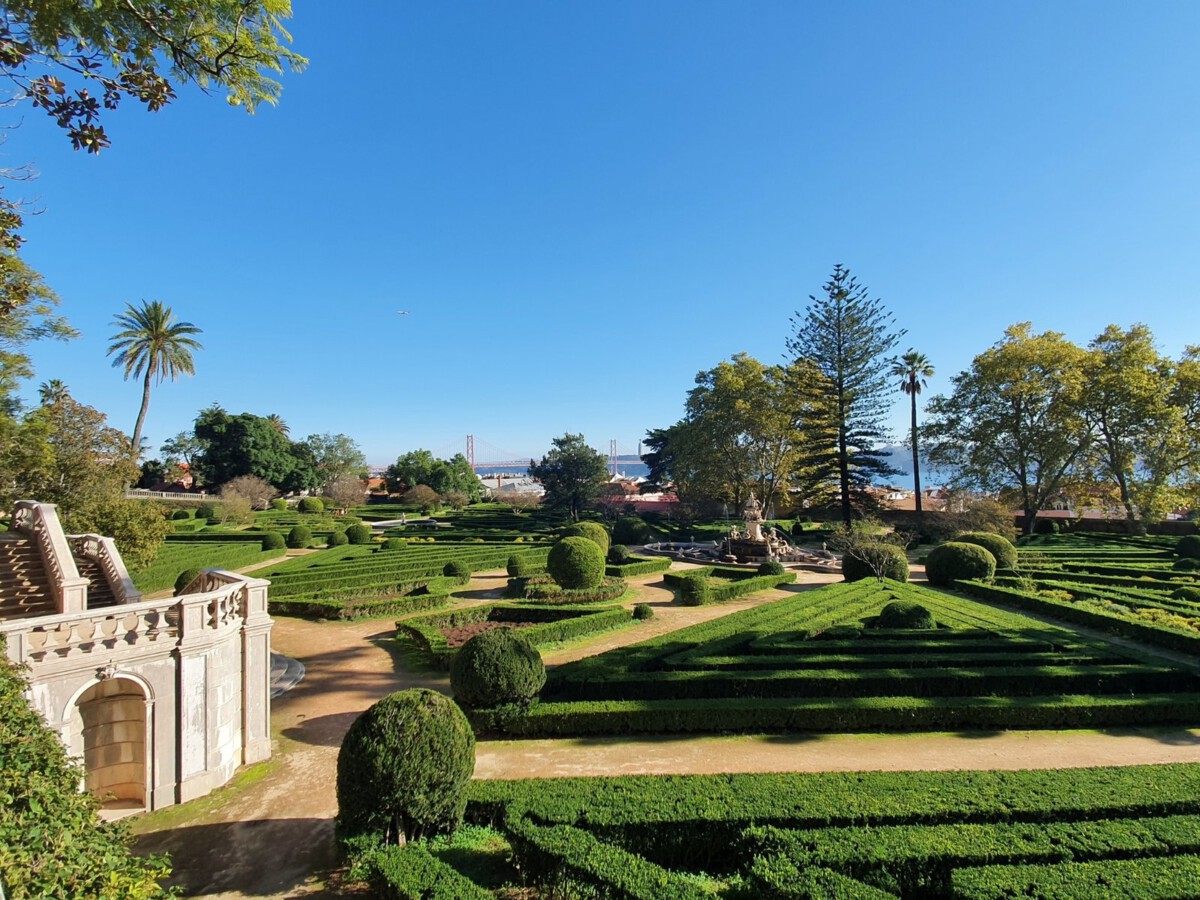The Allure of Lisbon’s Architecture

Lisbon’s streets are lined with buildings that seem to whisper stories from centuries past. You’ll find a striking mix of Gothic spires, Manueline flourishes, and Baroque curves that together form a patchwork of history. Photographs of these facades often highlight chipped paint, faded colors, and the delicate hand-painted tiles known as azulejos. The famous Jerónimos Monastery, with its ornate arches, stands as a monument to Portugal’s Age of Discoveries, drawing over 600,000 visitors annually. New high-rises and glass structures have sprung up, yet they never overpower the gravity of the old city. In 2024, Lisbon welcomed more than 5.3 million tourists, many of whom came specifically to see and photograph these storied streets. Preservation efforts, spurred by this surge of interest, have doubled city funding for restoration projects in the last two years. Every photograph of Lisbon’s architecture captures both the resilience and the vulnerability of a city that wears its age with pride.
The Charm of Alfama District

Alfama, Lisbon’s oldest quarter, is a maze where every corner feels like a secret waiting to be discovered. Its narrow, winding streets are paved with centuries-old cobblestones, and homes are painted in sun-washed yellows, pinks, and blues. The air often carries the haunting melodies of Fado singers, a tradition recognized by UNESCO as Intangible Cultural Heritage. Photographers are drawn to Alfama’s authenticity, where laundry hangs from windows and locals greet each other in doorways, offering candid glimpses of everyday life. Alfama’s population remains remarkably stable, with over 60% of families having lived there for more than three generations, according to a 2024 municipal report. Cultural events, such as the annual Santo António Festival, infuse the district with energy and color. Despite the growth in tourism, Alfama has resisted modern overhauls, preserving its heart and soul. Every photo taken here tells a story of Lisbon’s endurance and its undying sense of place.
The Beauty of Lisbon’s Street Art

Lisbon’s reputation as a street art capital has soared, with neighborhoods like Bairro Alto and Mouraria transformed by bold murals and intricate graffiti. International and local artists alike have made the city a living gallery, with over 400 registered public artworks as of 2025, according to the Lisbon City Council. The contrast between the crumbling plaster of old buildings and the fresh vibrancy of new murals creates striking photographic opportunities. Street art here often tackles social themes, from immigration to economic inequality, making each piece deeply meaningful. Guided street art tours, which saw a 30% increase in bookings last year, are now a must-do for visitors seeking to understand Lisbon’s contemporary pulse. Some works, like Vhils’ chiselled portraits, have become global icons. The city’s “Galeria de Arte Urbana” initiative actively promotes legal murals, ensuring that creativity flourishes without erasing the city’s historic texture. Each photograph of Lisbon’s street art captures a dialogue between the past and the present.
The Tranquility of Lisbon’s Gardens

Amid the dense cityscape, Lisbon’s gardens provide a soothing contrast, inviting both locals and tourists to slow down. The Jardim Botânico da Ajuda, established in the 18th century, houses over 1,700 plant species and offers sweeping views over the Tagus River. Parque Eduardo VII stretches across 26 hectares, with geometric hedges and tranquil ponds that are favorites with photographers. These green spaces are more than just retreats—they host open-air concerts, art installations, and community yoga sessions, especially during the spring and summer months. Over 1.2 million people visited Lisbon’s public gardens in 2024, reflecting their growing popularity. Photographs often capture the interplay of light and shadow beneath ancient trees, or the contrast of vibrant blooms against stone fountains. Garden walks are a cherished tradition, with families picnicking under the same olive trees for generations. The serenity of Lisbon’s gardens is a vital counterpoint in photo essays about the city’s romantic, slightly worn beauty.
The Iconic Tram 28

Tram 28 is more than just public transport—it’s a rolling symbol of Lisbon’s enduring charm. Painted in cheerful yellow, the tram rattles through neighborhoods like Graça, Baixa, and Estrela, passing many of Lisbon’s most photogenic sites. Its wooden benches and vintage fittings recall another era, making every ride feel like a step back in time. In 2024, over 1.1 million journeys were logged on Tram 28, showing its popularity with both residents and visitors. Photographers love to capture the tram squeezed between pastel-colored houses on impossibly narrow streets, often with locals peeking out from their windows. The tram’s exterior, worn by decades of sun and rain, adds to its nostalgic appeal. Many images become iconic representations of Lisbon, appearing on postcards and travel magazines worldwide. Tram 28 is not just a way to get around—it’s a living, moving piece of the city’s history.
The Vibrancy of Lisbon’s Markets

Lisbon’s markets are bustling, colorful, and full of life, making them irresistible to anyone with a camera. The Mercado da Ribeira, also known as Time Out Market, draws crowds with its gourmet food stalls and traditional vendors, welcoming 3.6 million visitors in 2024. Feira da Ladra, the city’s oldest flea market, sprawls across Alfama’s streets twice a week, offering everything from antiques to hand-painted ceramics. The sights, sounds, and smells of these markets provide endless inspiration for photographers who want to capture the city’s spirit. Interactions between sellers and buyers, the laughter of children, and the rainbow displays of produce all reflect Lisbon’s vibrant community. Even the worn wooden counters and faded awnings add a layer of authenticity, reminding visitors that these markets have survived centuries of change. Special market festivals, like the “Mercado de Natal,” attract thousands during the holiday season. Every photograph taken in Lisbon’s markets is a slice of daily life, brimming with history and heart.
The Enchantment of Lisbon’s Sunset

Lisbon’s sunsets are legendary, painting the city in a palette of gold, pink, and lavender. Miradouros—hilltop viewpoints like Senhora do Monte and Santa Catarina—fill up nightly with people eager to catch the perfect shot. The Tagus River reflects the colors, while silhouettes of the 25 de Abril Bridge and the city’s red rooftops create iconic backdrops. In 2024, sunset tours and photo walks saw a 25% rise in bookings, as more travelers sought to capture these magical moments. For many, the fading light on Lisbon’s aged buildings evokes a mix of nostalgia and hope. Social media is flooded with sunset images from the city, often tagged with #LisbonSunset, with over 1.5 million posts in the past year. The sunsets seem to slow time, inviting people to pause and appreciate the beauty around them. Photos of Lisbon at sunset have become one of the city’s most cherished visual exports.
The Influence of Portuguese Tiles

Azulejos, the iconic blue-and-white ceramic tiles, cover everything from palaces to humble houses in Lisbon. Each tile tells a story, with patterns ranging from Moorish geometrics to elaborate scenes of Portuguese history. In 2024, Lisbon launched a €2 million initiative to restore and preserve azulejo panels, reflecting their cultural importance. Photographers are drawn to the details—cracked surfaces, faded glazes, and the interplay of light and color. Some buildings display tiles that are centuries old, their designs worn smooth by time yet still dazzling in the sun. Azulejo workshops have grown in popularity, allowing visitors to try their hand at this traditional craft and take home their own creations. The National Tile Museum saw a record number of visitors last year, surpassing 200,000. Every photo of Lisbon’s tiles captures both fragility and endurance, making them a powerful symbol of the city’s romantic soul.
The Legacy of Lisbon’s Historic Cafés

Lisbon’s historic cafés are havens for artists, writers, and anyone seeking inspiration. A Brasileira, opened in 1905, is famous for its Art Deco interiors and the bronze statue of poet Fernando Pessoa. Café Martinho da Arcada, operating since 1782, has hosted countless intellectuals and politicians over the centuries. These cafés have retained their original charm, with marble-topped tables, ornate mirrors, and slightly worn wooden chairs. In 2024, more than 750,000 visitors stopped at Lisbon’s historic cafés, according to local hospitality groups. Photographers love to capture the quiet moments—friends deep in conversation, a solitary writer with their notebook, or the warm glow of afternoon light through stained glass. The atmosphere is thick with nostalgia and creativity, making each visit feel like stepping into a living piece of history. Every coffee break becomes a chance to document Lisbon’s enduring romanticism.
The Spirit of Lisbon’s Festivals

Lisbon’s calendar is packed with festivals that fill the streets with music, color, and laughter. The Festas de Santo António in June bring parades, street dances, and grilled sardines to Alfama, with over 1.2 million participants in 2024. The Lisbon Book Fair, held annually in Eduardo VII Park, draws more than 500,000 readers and writers from around the world. During these festivals, the old streets come alive with decorations, costumes, and joyful crowds, providing endless material for photographers. The worn facades of buildings are festooned with streamers, while traditional music drifts from every corner. Festivals are also occasions for cultural exchange, with visitors from dozens of countries joining locals in celebration. Street photography during these times captures the city’s energy, diversity, and unbreakable community bonds. Every festival in Lisbon is a living, breathing expression of its romantic spirit.






